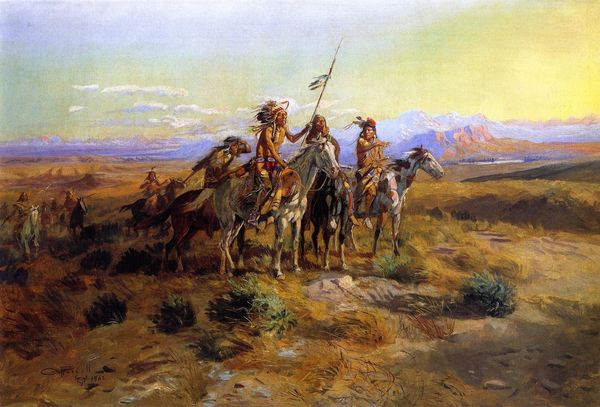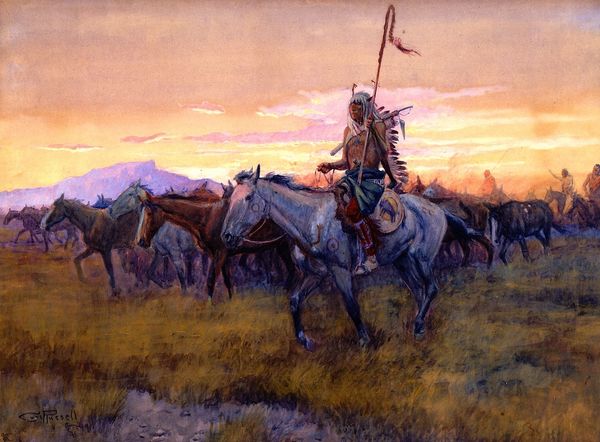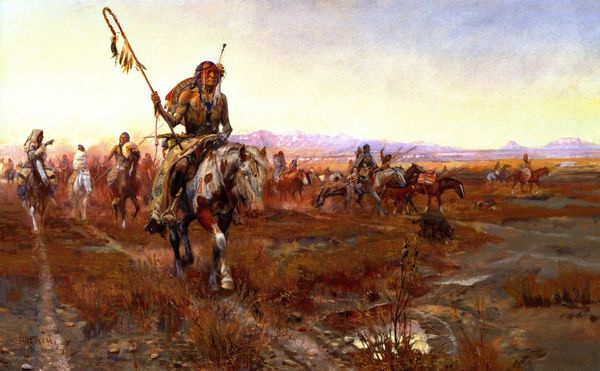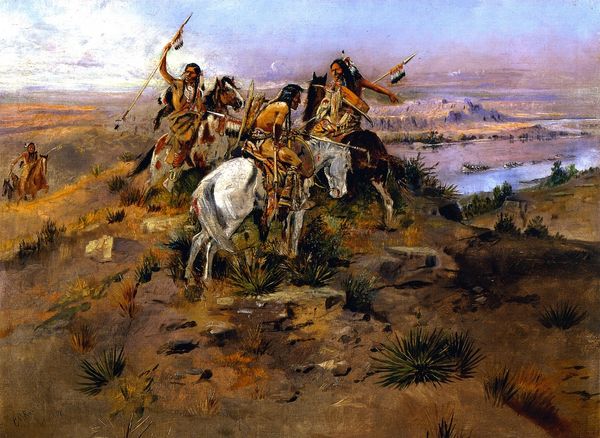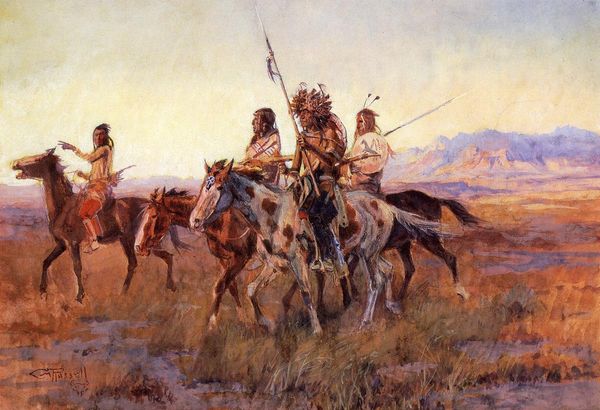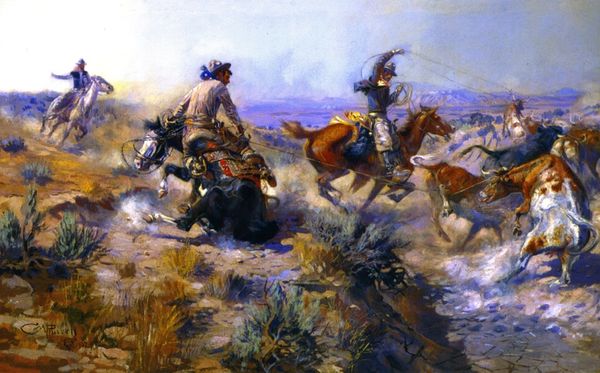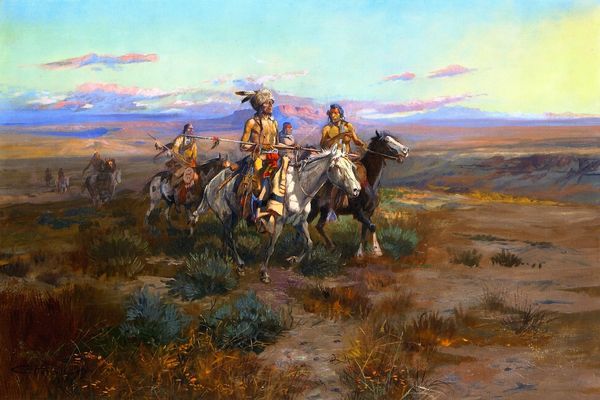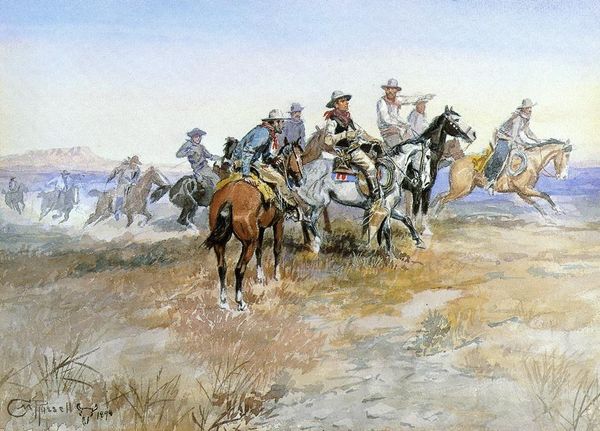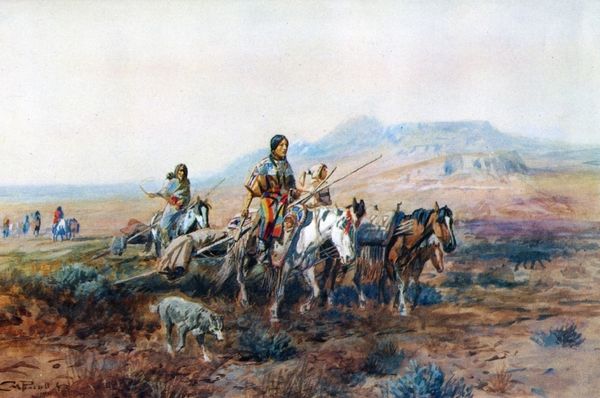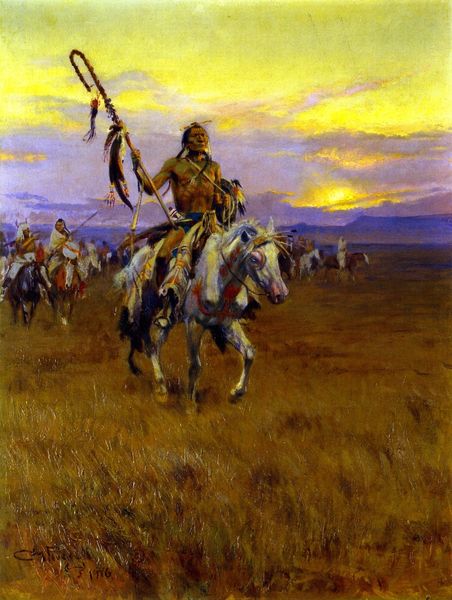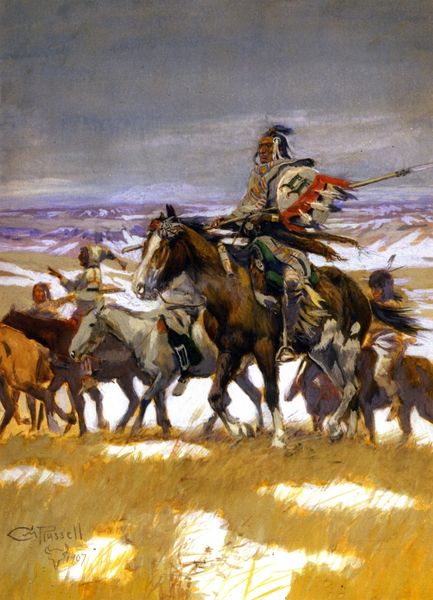
painting, oil-paint
#
narrative-art
#
painting
#
oil-paint
#
landscape
#
figuration
#
oil painting
#
horse
#
watercolour illustration
#
watercolor
Copyright: Public domain
Curator: Here we see "The Truce," a watercolor painting completed in 1907 by Charles M. Russell. Russell was known for depicting scenes from the American West, often focusing on the lives of cowboys and Native Americans. Editor: Immediately, I feel a sense of...apprehension, maybe? It's that liminal space, right before agreement, the silent understanding. I can almost smell the dust and horse sweat hanging in the air. Curator: Indeed, Russell captures a pivotal moment here, the tension before the calm, you might say. The image illustrates a band of indigenous warriors cautiously approaching what seems to be a camp or settlement. Editor: What strikes me, though, is the way he's handled the light. The hazy, almost ethereal quality gives the scene a dreamlike quality. It makes you question what is history and what's filtered through memory. The horses too, they are beautifully captured—almost mythical creatures. Curator: It's a Romanticized vision, certainly. It's important to consider the power dynamics at play. Russell’s work contributed to shaping the image of the Wild West and frequently depicted Indigenous peoples as noble figures, which, while seemingly positive, also risks perpetuating stereotypes and glossing over historical injustices. The image implies that peace, perhaps a conditional one, might be negotiated. But what did peace mean in that era? Editor: That’s fair. It does have that feeling of a staged tableau, a carefully curated presentation of the past, instead of history raw. But the artist in me can still admire his rendering. It's an idealized scene, painted, yes, with broad strokes but it gives me insight to that cultural interpretation. Curator: Exactly. The way it's exhibited—in museums like this one—further shapes its meaning. Museums themselves are never neutral spaces but also reflect the socio-political conditions during which such collections were built. How does Russell's portrayal, in your opinion, align with or deviate from, the lived experiences of Indigenous communities then, and what does it evoke today? Editor: I think any piece of art with humans as subject are an interpretation. This watercolor painting seems to express that. "The Truce" gives me a glance at what *could* have been instead of a definitive view of the old West. Curator: Thanks. I find these moments invaluable for expanding awareness of an artwork's role, shifting as needed to speak with audiences that will bring to it new perspectives and lived experiences that we haven't considered yet. Editor: Same here. Paintings are simply a launch pad, for storytelling, understanding, questioning. I would describe "The Truce," and its ability to make us explore and learn from it.
Comments
No comments
Be the first to comment and join the conversation on the ultimate creative platform.


